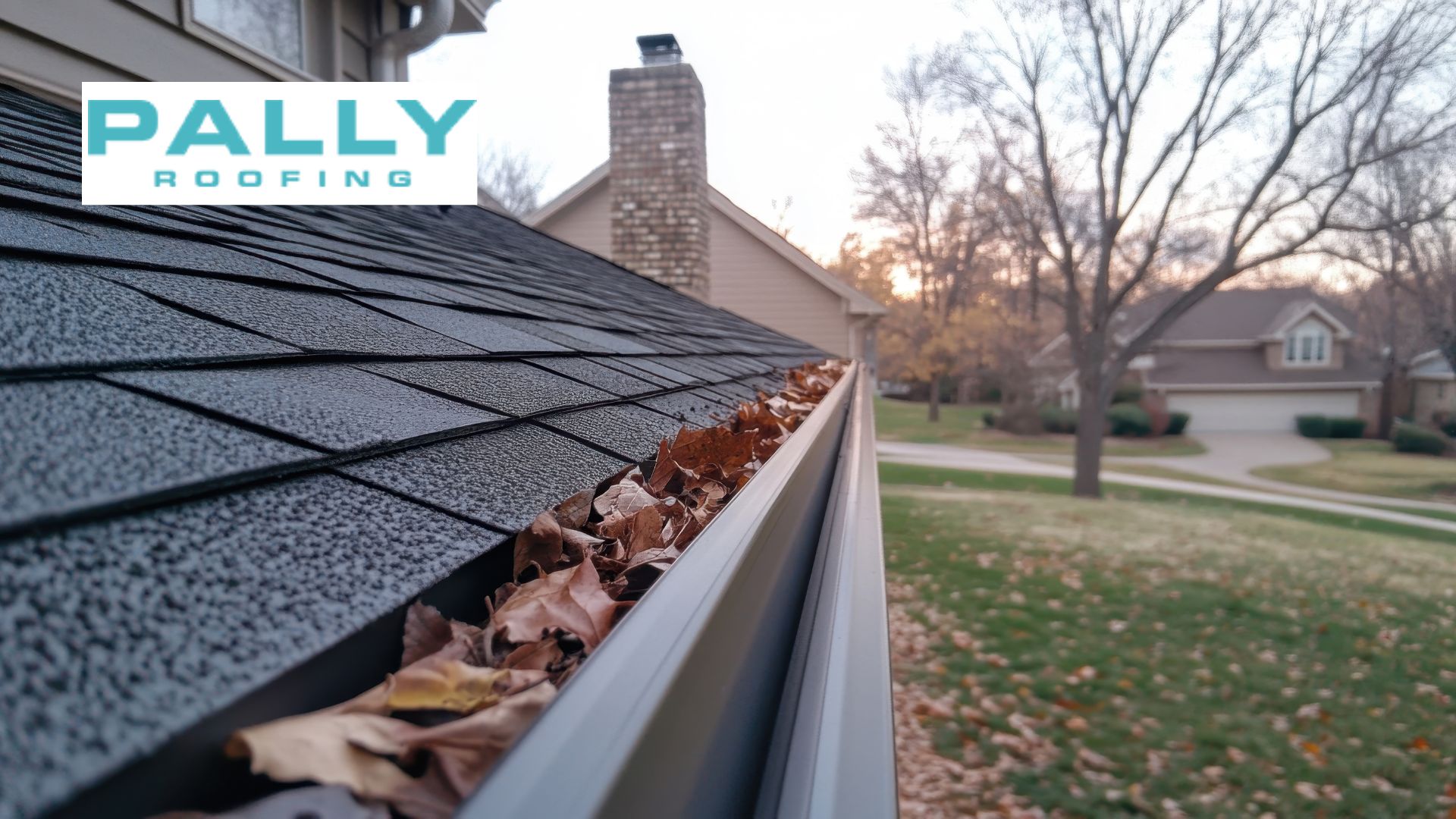Last updated on January 3rd, 2025 at 07:02 pm
Metal roofing is becoming an increasingly popular choice for homeowners and businesses due to its durability, energy efficiency, and aesthetic appeal. Unlike traditional roofing materials, metal roofs offer a lifespan that can exceed 50 years, require minimal maintenance, and withstand extreme weather conditions.
Table of Contents
Welcome to Pally Roofing, your premier roofing solution! Our skilled team offers top-quality services, including metal roofing, asphalt roofing, and gutter installation and repair.
Various types of metal roofs are available in the market, each with unique benefits and applications. This comprehensive guide will cover the most common types of metal roofs.
How Many Types of Metal Roofs?
There are 15 major types of metal roofs, each with unique characteristics and benefits. Here are the primary types of metal roofs:
- Standing Seam Metal Roofs
- Corrugated Metal Roofs
- Metal Shingles
- Metal Tiles
- Metal Slate Roofs
- Metal Shake Roofs
- Stone-Coated Metal Roofs
- Ribbed Metal Panels
- Flat Seam Metal Roofs
- Zinc Roofing
- Copper Roofing
- Aluminum Roofing
- Steel Roofing
- Tin Roofing
- Galvalume Roofing
Different Metal Roofs and their Estimated Costs
Learn About Different Types of Metal Roofs
1. Standing Seam Metal Roofs
Description and Characteristics:
Standing seam metal roofs feature long, vertical panels with seams that rise above the panel’s flat surface. These seams are fastened with hidden fasteners, giving a sleek and modern appearance. The raised seams, or “standing seams,” are designed to efficiently channel water off the roof, making them highly effective in areas with heavy rainfall or snow.
Advantages:
- Durability: Known for their long lifespan, often lasting 50 years or more.
- Weather Resistance: Excellent at withstanding extreme weather conditions, including heavy rain, snow, and high winds.
- Low Maintenance: Requires minimal maintenance compared to traditional roofing materials.
- Energy Efficiency: Reflects heat, reducing cooling costs in warmer climates.
- Aesthetic Appeal: Offers a clean, modern look that enhances the overall appearance of a building.
Disadvantages:
- Cost: Higher initial cost compared to other roofing materials.
- Installation Complexity: Professional installation is required due to the complexity and precision needed.
- Thermal Expansion: Panels can expand and contract with temperature changes, which may cause noise or affect the seams if not correctly installed.
2. Corrugated Metal Roofs

Description and Characteristics:
Corrugated metal roofs comprise sheets with a wavy, rippled pattern, providing increased strength and rigidity. These sheets are often made from galvanized steel, aluminum, or other metals and are commonly used in industrial, agricultural, and residential applications.
Advantages:
- Affordability: Generally more cost-effective compared to other metal roofing options.
- Durability: Highly resistant to impacts and adverse weather conditions, ensuring a long lifespan.
- Lightweight: Easier to handle and install, reducing building structural load.
- Versatility: Suitable for various applications, including residential, commercial, and agricultural buildings.
- Quick Installation: The straightforward design allows faster installation than other roofing types.
Disadvantages:
- Aesthetic Limitations: The industrial look may only suit some architectural styles.
- Noise: Can be noisy during rain or hailstorms unless adequately insulated.
- Maintenance: This may require more frequent maintenance to address potential rust and corrosion, especially in coastal areas.
- Insulation: It offers less natural insulation than other roofing materials, potentially increasing heating and cooling costs if not adequately insulated.
3. Metal Shingles

Types of Metal Shingles Available:
- Steel Shingles are often coated with a protective layer of zinc or an alloy, providing durability and resistance to corrosion.
- Aluminum Shingles: Lightweight and naturally resistant to rust, ideal for coastal environments.
- Copper Shingles: Highly durable with a distinctive, elegant appearance that develops a patina over time.
- Zinc Shingles: Known for their longevity and low maintenance, offering a unique aesthetic as they age.
Pros Compared to Other Roofing Materials:
- Durability: Metal shingles can last 50 years or more, outlasting asphalt shingles and wood shakes.
- Weather Resistance: Excellent resistance to wind, hail, and fire, making them suitable for various climates.
- Energy Efficiency: Reflect heat, reducing cooling costs in the summer.
- Low Maintenance: Require minimal maintenance compared to traditional roofing materials.
- Aesthetic Variety: Available in various styles and colors, mimicking traditional shingles, slate, or wood shakes.
Cons Compared to Other Roofing Materials:
- Cost: Higher initial cost compared to asphalt shingles.
- Noise: Can be noisier during rain or hailstorms unless proper insulation is installed.
- Complex Installation: Requires professional installation, which can add to the overall cost.
- Thermal Expansion: Metal shingles can expand and contract with temperature changes, potentially leading to issues if not correctly installed.
4. Metal Tiles
Varieties of Metal Tiles:
- Steel Tiles: Coated for corrosion resistance and available in various profiles.
- Aluminum Tiles: Lightweight and rust-resistant, ideal for coastal areas.
- Copper Tiles: Durable and aesthetically appealing, developing a natural patina.
- Zinc Tiles: Long-lasting and low maintenance with a unique aging process.
Benefits of Using Metal Tiles:
- Durability: Long lifespan, often exceeding 50 years.
- Weather Resistance: Withstand harsh weather conditions, including wind, hail, and fire.
- Lightweight: Easier to handle and reduces structural load.
- Aesthetic Appeal: Available in various styles and colors, mimicking traditional tile materials.
- Energy Efficiency: Reflect heat, reducing cooling costs.
5. Metal Slate Roofs
Comparison with Natural Slate Roofs:
- Weight: Metal slate roofs are significantly lighter than natural slate, reducing structural strain.
- Installation: Easier and faster installation than natural slate requires skilled labor.
- Cost: Generally more affordable than natural slate due to lower installation and material costs.
- Maintenance: Requires minimal maintenance compared to natural slate, which can be prone to cracking and delamination over time.
Advantages in Terms of Weight and Longevity:
- Weight: Metal slate roofs are lighter, reducing the need for additional roof support structures.
- Longevity: Metal slate roofs can last 50 years or more, similar to natural slate, but with less risk of damage from impacts and weather extremes.
6. Metal Shake Roofs
Mimicking the Look of Wooden Shakes:
- Metal shake roofs replicate the rustic appearance of wooden shakes, offering a traditional aesthetic with modern durability.
Performance and Weather Resistance:
- Highly durable, metal shakes withstand wind, hail, and fire better than wood.
- Unlike wood shakes, which are prone to rot and insect damage, minimal maintenance is required.
7. Stone-Coated Metal Roofs

Overview and Unique Features:
- Stone-coated metal roofs consist of metal panels with stone chips and acrylic film.
- They combine the durability of metal with the aesthetic appeal of traditional roofing materials like slate or clay tiles.
Benefits of Stone Coating on Metal Roofs:
- Durability: Enhanced resistance to weather elements such as hail, wind, and UV rays.
- Aesthetic Appeal: Available in various styles and colors, mimicking traditional roofing materials.
- Longevity: Extended lifespan, often exceeding 50 years, with minimal maintenance.
- Energy Efficiency: Reflective surface reduces cooling costs by keeping the home cooler in hot climates.
8. Ribbed Metal Panels
Description of Ribbed Metal Panels:
- Ribbed metal panels feature raised ridges or corrugations across their surface.
- They are typically made from galvanized steel or aluminum.
Structural Advantages and Common Uses:
- Strength: Increased structural integrity due to the ridged design.
- Versatility: Used in industrial, agricultural, and commercial buildings for roofing and siding.
- Water Management: Effective at channeling water away from the roof surface, reducing the risk of leaks.
9. Flat Seam Metal Roofs

Detailed Description:
- Flat seam metal roofs consist of flat metal panels joined together with raised seams.
- They have been used historically in traditional architecture and have gained popularity in modern designs.
Advantages in Specific Environments:
- Urban Settings: Enhances modern architectural designs with clean lines and minimalistic aesthetics.
- Coastal Areas: Resistant to salt air corrosion and withstands harsh weather conditions.
- High Snow Areas: Prevents snow accumulation and aids in snow shedding due to the smooth surface.
10. Zinc Roofing
Characteristics and Benefits:
- Durability: Zinc roofs can last 50-100 years with minimal maintenance.
- Weather Resistance: Resistant to corrosion, rust, and mildew.
- Aesthetic Appeal: Develops a natural patina over time, enhancing its appearance.
- Sustainability: Highly recyclable and environmentally friendly.
Longevity and Environmental Impact:
- Longevity: Exceptional lifespan reduces the need for frequent replacements.
- Environmental Impact: Low energy consumption in production and recyclability make zinc roofing eco-friendly.
11. Copper Roofing

Benefits of Copper Roofing:
- Durability: Long lifespan of 100+ years with minimal maintenance.
- Patina: Develops a distinctive greenish patina over time, adding character and enhancing corrosion resistance.
- Weather Resistance: Resistant to corrosion, mold, and mildew, making it suitable for various climates.
Cost and Maintenance Considerations:
- Cost: Higher initial cost compared to other roofing materials, but offsets with longevity.
- Maintenance: Requires periodic inspections and maintenance to preserve appearance and performance.
12. Aluminum Roofing
Critical Properties of Aluminum:
- Lightweight and easy to handle during installation.
- Naturally resistant to corrosion and rust due to its oxide layer.
Advantages:
- Weight: Lightweight nature reduces structural load and facilitates more straightforward installation.
- Corrosion Resistance: Excellent durability in coastal and humid environments.
- Longevity: Can last 40-50 years with minimal maintenance.
13. Steel Roofing
Types of Steel Roofs:
- Galvanized Steel: Zinc-coated for enhanced corrosion resistance.
- Galvalume Steel: Zinc and aluminum-coated for superior durability and longevity.
Strength, Durability, and Cost Factors:
- Strength: Steel roofs are robust and can withstand harsh weather conditions, including wind and hail.
- Durability: Galvalume steel offers exceptional resistance to corrosion, extending the lifespan to 30-50 years or more.
- Cost: Moderate initial cost, with Galvalume being slightly higher than galvanized due to added protection against corrosion.
14. Tin Roofing
Benefits and Drawbacks:
- Benefits: Affordable compared to other metals, lightweight, and easy to work with.
- Drawbacks: Susceptible to corrosion over time, requiring regular maintenance and coating to prolong lifespan.
Installation and Maintenance Considerations:
- Installation: Requires careful handling to prevent damage during installation.
- Maintenance: Regular inspections and re-coating are necessary to prevent corrosion and maintain appearance.
15. Galvalume Roofing
Composition and Unique Properties:
- Composition: Galvalume roofing is made from zinc, aluminum, and silicon-coated steel.
- Properties: Offers enhanced corrosion resistance and durability due to the protective layers of zinc and aluminum.
Advantages Over Other Types of Metal Roofing:
- Corrosion Resistance: Superior protection against rust and corrosion compared to traditional galvanized steel.
- Longevity: Extended lifespan with minimal maintenance, lasting 50 years or more.
- Heat Reflectivity: Reflects heat effectively, reducing cooling costs in warmer climates.
Conclusion
In conclusion, Pally Roofing offers various metal roofing options to meet diverse needs and preferences. From the sleek and modern look of standing seam roofs to the timeless appeal of metal shingles and the durability of corrugated panels, each option is designed to withstand varied weather conditions with minimal maintenance.
When choosing a metal roof, factors such as climate suitability, aesthetic preferences, budget considerations, and long-term durability should be weighed carefully. Metal roofs enhance the appearance of homes and businesses and provide exceptional longevity and energy efficiency benefits.
Contact us today to discover how our metal roofing solutions can transform your property while providing lasting protection and value.
Author
-

With more than 16 years of hands-on experience, Phillip Schmucker is the knowledgeable owner of Pally Roofing. His dedication to superior roofing services has earned him a reputable place in the industry. Phillip also shares his extensive expertise through writing, providing readers with practical tips and professional advice on various roofing topics. Follow him on LinkedIn.
View all posts






